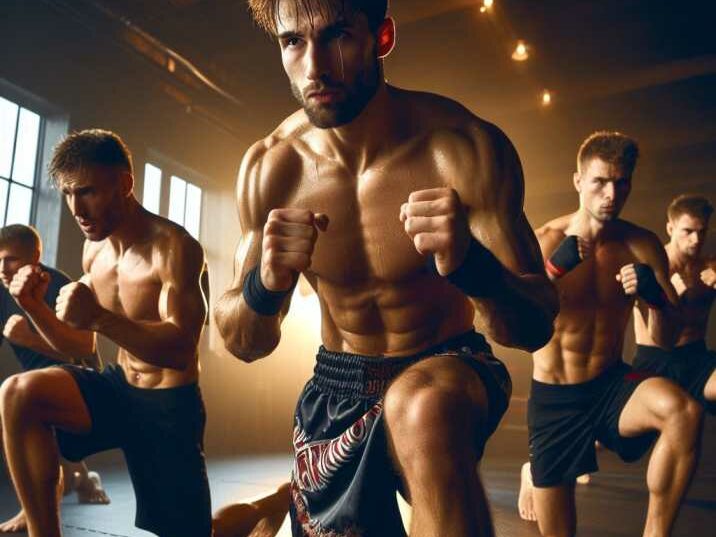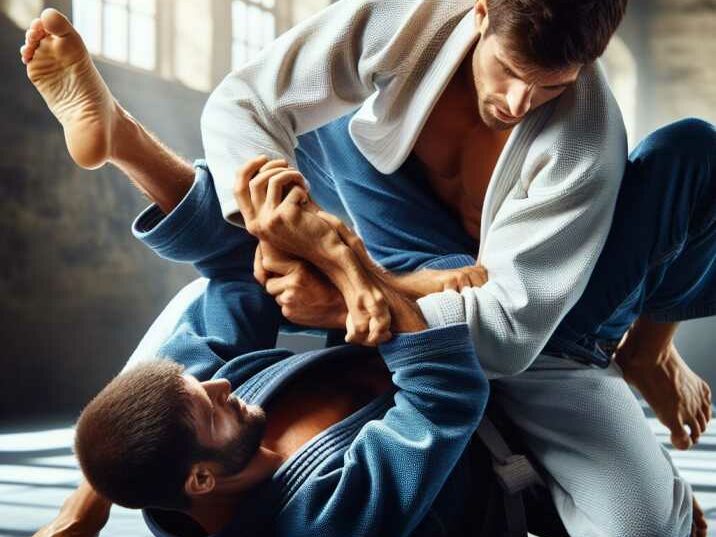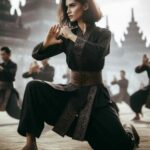Introduction:
Table of Contents
Are you ready to embark on a journey that combines physical fitness with the art of self-defense? Martial arts offer a captivating path to sculpting your physique while honing essential combat skills. With an array of disciplines to choose from, each boasting its own unique techniques and training methods, it’s natural to wonder: Which martial art reigns supreme in the realm of muscle building? Fear not, aspiring martial artist, for we’re about to embark on an in-depth exploration of the top contenders in the USA, unveiling the secrets behind their muscle-building prowess.
Understanding Martial Arts and Building Muscle:
Before we delve into the specifics of each martial art style, it’s crucial to grasp the fundamental principles that underpin muscle growth within the context of martial arts training.
Strength Training:
Many martial arts incorporate strength-building exercises such as bodyweight drills, partner resistance training, and in some cases, the use of weights or resistance bands. These exercises target various muscle groups, including the core, arms, legs, and back, fostering overall strength and power.
High-Intensity Workouts:
Martial arts training sessions often involve high-intensity intervals of activity interspersed with short rest periods. This style of training not only improves cardiovascular fitness but also promotes muscle endurance and growth through repeated bouts of exertion.
Functional Movement:
Unlike traditional gym workouts that isolate specific muscle groups, martial arts training emphasizes functional movements that mimic real-life scenarios. Techniques such as punches, kicks, throws, and grappling maneuvers engage multiple muscle groups simultaneously, fostering balanced strength development and enhancing coordination and agility.
Resistance Training vs. Martial Arts
Traditional resistance training, such as weightlifting, is renowned for its ability to stimulate muscle growth. However, martial arts offer a unique blend of cardiovascular exercise, bodyweight resistance, and functional movement patterns that can also promote muscle development.
Hormonal Response
Engaging in intense physical activity, such as martial arts training, can stimulate the release of hormones like testosterone and growth hormone, both of which play crucial roles in muscle growth. The specific demands of each martial art style can influence the magnitude of this hormonal response.
Exploring the Top Muscle-Building Martial Arts Styles:
Muay Thai: The Art of Eight Limbs
- Focus: Known as the “Art of Eight Limbs,” Muay Thai incorporates punches, kicks, elbows, and knee strikes.
- Muscle Building: Muay Thai training offers a comprehensive full-body workout, targeting the core, arms, legs, and shoulders. The repetitive execution of strikes and clinch work not only enhances muscle endurance but also promotes strength and power development.

Brazilian Jiu-Jitsu (BJJ): The Art of Ground Fighting
- Focus: BJJ revolves around ground fighting and submission grappling techniques.
- Muscle Building: BJJ training emphasizes leverage, technique, and body positioning rather than sheer brute force. However, the constant engagement of core muscles, along with the use of grips and holds, fosters exceptional core strength, endurance, and overall functional muscle development.

Wrestling: The Sport of Takedowns and Throws
- Focus: Wrestling focuses on takedowns, throws, and controlling your opponent on the mat.
- Muscle Building: Wrestling training is renowned for its intensity and demands exceptional strength and conditioning. From explosive takedowns to grappling drills, wrestling engages virtually every muscle group in the body, resulting in impressive gains in strength, power, and muscular endurance.
Mixed Martial Arts (MMA): The Ultimate Fusion
- Focus: MMA combines elements of striking, grappling, and submission techniques from various martial arts disciplines.
- Muscle Building: MMA training provides a well-rounded workout that encompasses striking drills, grappling sessions, and cardiovascular conditioning. This multifaceted approach to training stimulates muscle growth, enhances muscular endurance, and cultivates overall athleticism.
Taekwondo: The Art of Dynamic Kicking
- Focus: Taekwondo emphasizes high-speed kicking techniques and agility.
- Muscle Building: While Taekwondo may not emphasize strength training as explicitly as other styles, the repetitive practice of dynamic kicking drills engages the core, legs, and glutes, leading to improved muscular endurance, flexibility, and lower body strength.
Finding Your Perfect Match: A Comprehensive Guide for Aspiring Martial Artists:
Define Your Goals:
Determine whether your primary focus is on building muscle, mastering self-defense skills, or achieving a balance of both.
Assess Your Fitness Level:
Consider your current fitness level, experience with exercise, and any pre-existing injuries or physical limitations that may influence your choice of martial art.
Try Before You Commit:
Take advantage of introductory classes and trial sessions offered by martial arts schools to experience different styles firsthand and find the one that resonates with you.
Consult with Instructors:
Seek guidance from experienced instructors who can provide insights into the specific benefits and training requirements of each martial art style, helping you make an informed decision that aligns with your goals and aspirations.
Table of Information:
| Martial Art | Focus | Muscle Building |
|---|---|---|
| Muay Thai | Striking (punches, kicks, elbows, knees) | Full-body workout targeting core, arms, legs, and shoulders. |
| Brazilian Jiu-Jitsu (BJJ) | Ground fighting and submission grappling | Emphasizes core strength, endurance, and functional muscle development. |
| Wrestling | Takedowns and mat control | Intense conditioning and strength training targeting the entire body. |
| Mixed Martial Arts (MMA) | Combination of striking and grappling techniques | Provides a comprehensive workout stimulating muscle growth and endurance. |
| Taekwondo | High-speed kicking techniques | Focuses on lower body strength, flexibility, and agility. |
Conclusion:
In conclusion, martial arts offer a dynamic and effective means of building muscle, enhancing physical fitness, and acquiring valuable self-defense skills. Whether you choose Muay Thai for its full-body conditioning, BJJ for its emphasis on leverage and technique, wrestling for its unparalleled intensity, MMA for its versatility, or Taekwondo for its explosive kicking techniques, each martial art offers unique benefits and challenges. By immersing yourself in the rich tradition and practice of martial arts, you’ll not only transform your body but also cultivate discipline, resilience, and a profound sense of self-confidence. So, unleash your inner warrior, and let the journey begin!
FAQs:
Q: How long does it take to build muscle with martial arts?
A: The timeline for muscle growth varies depending on factors such as individual genetics, training intensity, and consistency. With dedicated practice, noticeable muscle gains can typically be observed within a few months of regular training.
Q: Can martial arts training replace traditional strength training?
A: While martial arts training can contribute to muscle development, it may not fully replace traditional strength training methods. Incorporating a combination of both martial arts and resistance training can yield optimal results for muscle growth and overall fitness.
Q: Do all martial arts focus on muscle building?
A: While most martial arts offer physical benefits, not all styles prioritize muscle building as a primary goal. Some martial arts may emphasize self-defense, discipline, or cultural heritage over muscle development.
Q: Is it necessary to lift weights to build muscle alongside martial arts training?
A: While weightlifting can be an effective tool for muscle growth, it is not strictly necessary for building muscle through martial arts training. Bodyweight exercises, resistance training drills, and dynamic movements inherent in martial arts practice can also stimulate muscle growth.
Q: How important is nutrition for muscle building with martial arts?
A: Nutrition plays a crucial role in supporting muscle growth and recovery, regardless of the training method. Consuming a balanced diet rich in protein, carbohydrates, and healthy fats can optimize the results of martial arts training for muscle development.


